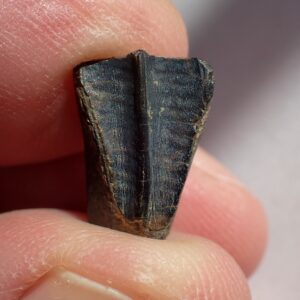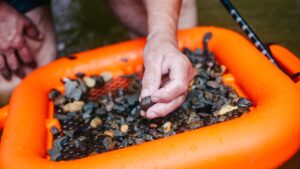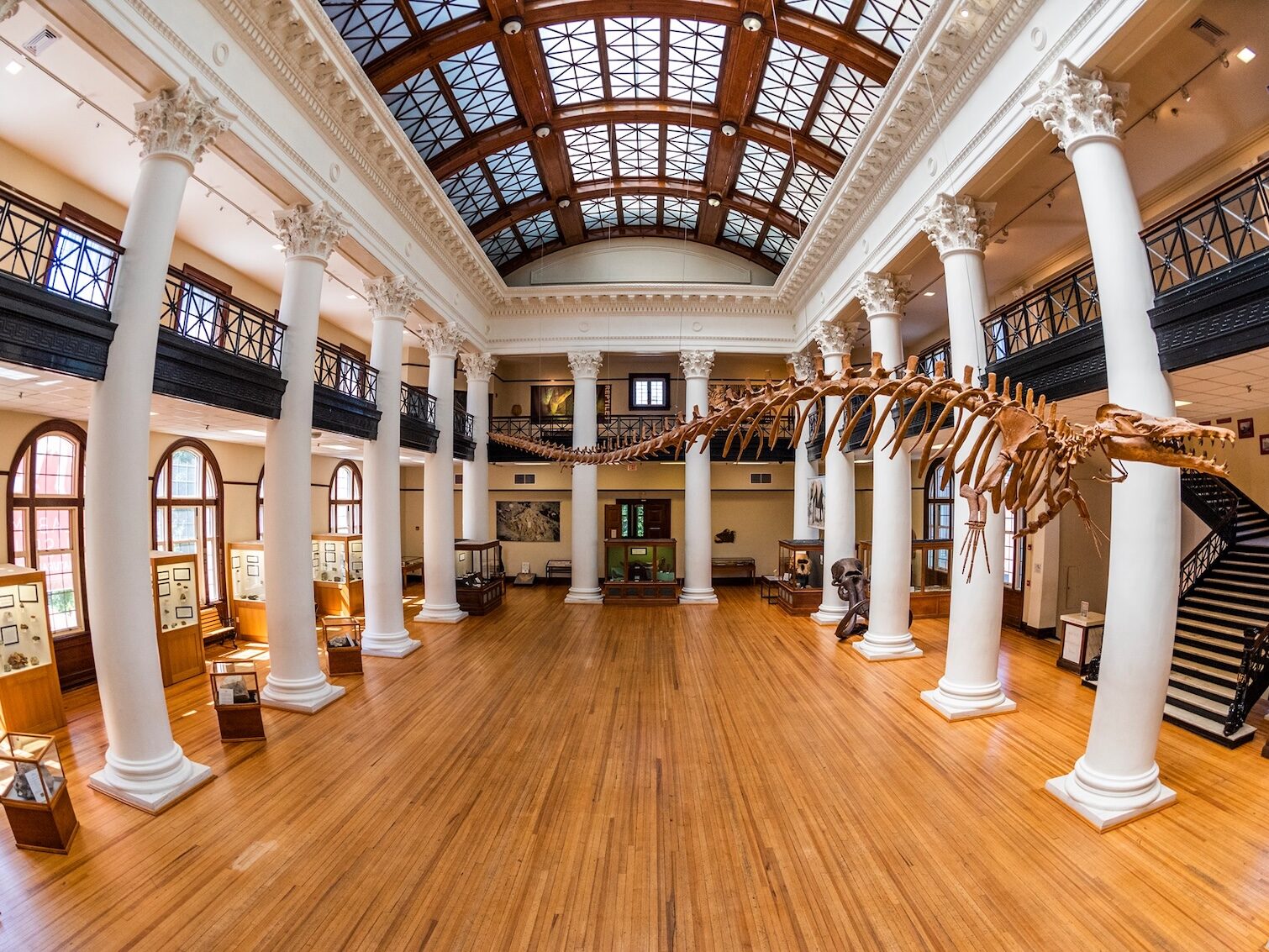A rare hadrosaur tooth dating back roughly 84 million years has been discovered in Greene County, Alabama, during a fossil excursion hosted by the Alabama Museum of Natural History.

(Alabama Museum of Natural History/Facebook)
According to the museum, Dr. John Friel, the museum’s director, found the fossil on July 26 while exploring a gravel bar in a creek on private property. The hadrosaur, more commonly known as a duck-billed dinosaur, was among the dominant herbivores of the Late Cretaceous Period in North America and Asia.
The museum noted that dinosaur remains are extremely rare in Alabama because much of the state was below sea level during the Cretaceous Period. The Greene County site is already known for yielding a wide range of fossils, including shark teeth and ammonites, making this dinosaur discovery especially significant.
The tooth has been cataloged as ALMNH:Paleo:22015 and may be displayed in the future at the Alabama Museum of Natural History. Exceptional finds like this are added to the museum’s paleontology collection to be preserved for research or public exhibition.
“Our museum’s fossil excursions are a great introduction for anyone curious about fossil hunting, and they have proven to be exceedingly popular as we regularly fill all the available spaces we have each year,” said Dr. Friel. “I like to tell all our first-time participants that I guarantee they will find fossils, and in most cases, they can keep everything they find. We only ask that participants donate exceptional finds like this dinosaur tooth to the Museum, so they can be added to the paleontology collection and be made available to researchers or possibly used for public display in our museum.”

(Alabama Museum of Natural History/Facebook)
“I hoped there might be additional dinosaur fossil finds by our participants when we returned this summer,” Friel added, “but little did I know that I would be the lucky one to find a dinosaur fossil this year!”
The discovery follows another important find in 2024, when two dinosaur toe bones were recovered during a similar museum excursion.
This story first appeared on Yellowhammer News.




